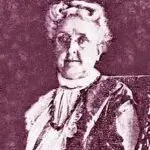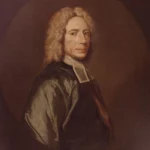Biblical Truth: Jesus desires to forgive our past sins and directs us to live pure lives in the future.
Caught in the Act: John 8:2-4.
[2] Early in the morning He came again into the temple, and all the people were coming to Him; and He sat down and began to teach them. [3] The scribes and the Pharisees brought a woman caught in adultery, and having set her in the center of the court, [4] they said to Him, “Teacher, this woman has been caught in adultery, in the very act.” [NASU]
The Synoptic Gospels tell us that the pattern followed by Jesus during the closing days of His life was to teach in
[2-4] Again indicates that the narrative from which this story was taken included a previous visit or visits to the temple. Evidently it also included a reference to teaching. So on this occasion Jesus went to the temple early in the morning. Came and teach are continuous tenses indicating that this was Jesus’ pattern. The group is joined by some religious leaders bringing a woman they had taken in the act of sin. Scribes and Pharisees do not mean the same people, for scribes need not necessarily be Pharisees. The scribes were members of a skilled profession whose principal study was the law. Since the law was the chief interest of the Pharisees, the two groups had much in common. Accordingly it is never strange to find the two acting in conjunction. The woman these people bring had been taken in adultery. This is interesting, for apparently it implies that witnesses had seen the very act. Compromising circumstances were not enough. This indicates that the woman getting caught was probably due to a trap being set. Since the woman was taken in the very act there should have been two sinners, not one, before Jesus. But if the whole thing was engineered provision would have been made for the man to escape. All the indications are that her accusers had some special vindictiveness against her. This is shown also in the fact that they brought the woman along publicly. There was no need for this. She might have been kept in custody while the case was referred to Jesus. They address Jesus with the polite Teacher, and explain the circumstances. The title is appropriate in a context where Jesus is to be asked to decide a point of the law.
Condemned by God’s Law: John 8:5-6a.
[5] “Now in the Law Moses commanded us to stone such women; what then do You say?” [6] They were saying this, testing Him, so that they might have grounds for accusing Him. [NASU]
There is little evidence that stoning was carried out for the offence of adultery in first-century
A New Start Possible: John 8:6b-11.
[6] But Jesus stooped down and with His finger wrote on the ground. [7] But when they persisted in asking Him, He straightened up, and said to them, “He who is without sin among you, let him be the first to throw a stone at her.” [8] Again He stooped down and wrote on the ground. [9] When they heard it, they began to go out one by one, beginning with the older ones, and He was left alone, and the woman, where she was, in the center of the court. [10] Straightening up, Jesus said to her, “Woman, where are they? Did no one condemn you?” [11] She said, “No one, Lord.” And Jesus said, “I do not condemn you, either. Go. From now on sin no more.” [NASU]
[6-7] Jesus’ reaction was to ignore them. He simply stooped and made marks in the dust. There is no hint of why He wrote or what He wrote. A not unlikely suggestion is that He wrote the words He later spoke. Evidently the accusers felt that Jesus’ silence arose from an inability to evade giving them the opening for which they were looking. So they persisted in questioning Him. But Jesus stood up and invited any one among them who was sinless to throw the first stone. This answer completely disarmed them. It could not possibly be construed as a rejection of the law. Jesus specifically enjoined that a stone be thrown. But His limitation on who might throw it effectively prevented any harm coming to the guilty woman. The words of Jesus are both an appeal to conscience and a warning to the hearers that their own lives might very well be at stake.
[8-9] Jesus stooped again and resumed His writing. But as the significance of His words sunk in the men went out. The continuous tense of go out gives the thought of something like a procession. They kept on going out. The consciences of all were touched, and all went. When the force of Jesus’ words struck home they were no longer interested in her sin, but in their own. They made no attempt to interfere with her for she was left alone in the center of the court.
[10-11] Jesus now addresses the woman, asking where her accusers are. Jesus’ answer brings the incident to a fitting conclusion. He, too, will not condemn her. But that does not mean that He condones her sin. He tells her to sin no more. The form of the command implies a ceasing to commit an action already started: “Stop your sinful habit”. And the no more points to the thought of no return. She is to make a clean break with sin. Jesus does not refer specifically to adultery, though there cannot be any doubt what He primarily has in mind. His words are perfectly general. He is calling the woman to amendment of life, the whole of life. It should not be overlooked that He says nothing about forgiveness. The guilty woman has given no sign of repentance or of faith. What He does is to show mercy and to call to righteousness.
The True Liberator: John 8:30-36.
[30] As He spoke these things, many came to believe in Him. [31] So Jesus was saying to those Jews who had believed Him, “If you continue in My word, then you are truly disciples of Mine; [32] and you will know the truth, and the truth will make you free.” [33] They answered Him, “We are Abraham’s descendants and have never yet been enslaved to anyone; how is it that You say, ‘You will become free’?” [34] Jesus answered them, “Truly, truly, I say to you, everyone who commits sin is the slave of sin. [35] The slave does not remain in the house forever; the son does remain forever. [36] So if the Son makes you free, you will be free indeed.” [NASU]
This section of discourse is addressed to those who believe, and yet do not believe. Clearly they were inclined to think that what Jesus said was true. But they were not prepared to yield Him the far-reaching allegiance that real trust in Him implies. This is a most dangerous spiritual state. To recognize that truth is in Jesus and to do nothing about it means that in effect one places oneself with the enemies of the Lord. It means also that there is some powerful spiritual force holding back the would-be believer from what is recognized as the right course of action. The man in that position is not free but a slave. Jesus makes it plain that his adversaries are slaves to sin and in the closest possible relationship to the Evil One. True freedom is to be found in the liberty which Christ gives. By setting themselves in constant opposition these Jews did but proclaim their servitude to the enemy of men’s souls.
The Jews who had believed him apparently refers to the many of verse 30. In Jesus’ view they turn out to be slaves to sin (34), indifferent to Jesus’ word (37), children of the devil (44), liars (55), and guilty of mob tactics, including attempted murder of the one in whom they have professed to believe (59). John has already introduced the theme of fickle faith. In 2.23, the many people who believed in His name when they saw the miraculous signs Jesus was doing turn out to have untrustworthy faith (2.24-25). The same theme of fickle faith recurs in 6.60, where many of Jesus’ disciples turn away from Him after a discourse of which they disapprove. Jesus now lays down exactly what it is that separates spurious faith from true faith, fickle disciples from genuine disciples.
[31] There is a puzzle in the meaning to be attached to believed Him. Normally John uses this verb of trust in Jesus, such trust as brings men out of death into life. We should expect a discourse introduced in this fashion to be addressed to genuine disciples. But as it unfolds it appears that these Jews are nothing of the sort. John is speaking of men who had made an outward profession, but that in this particular case it did not go very deep. Jesus’ words then are meant to drive home to formal and casual adherents something of the meaning of true discipleship. If men in any sense believe in Him it is important that they be led to see what real faith means. Since many attached themselves to Jesus He proceeded to unfold what their attachment should mean. The key word here is continue. It is only those who continue who are genuine disciples. My word will stand for the whole of Jesus’ teaching. When a man abides in Christ’s word, then he is a true disciple.
[32] Now Jesus does move into the future. When a man is a true disciple there are consequences. He then will know the truth. Truth is closely connected with the Person of Christ, so that knowledge of the truth is naturally associated with being His disciple. What is essentially part of Himself He communicates to His followers. Jesus goes on to say that the truth in question liberates. This must be understood in the context of this whole Gospel. The truth of which John writes is the truth that is bound up with the Person and the work of Jesus. It is saving truth. It is the truth which saves men from the darkness of sin, not that which saves them from the darkness of error. Men do not always, or even usually, realize that they are in bondage. They tend to rest in some fancied position of privilege, national, social, or religious. So these Jews, proud of their religion, did not even know their need to be free.
[33] If Jesus is offering freedom, the assumption is that the Jews are currently slaves. This they emphatically deny. Certainly they are talking about spiritual, inward freedom and privilege and not political freedom considering their current situation. These believers are already demonstrating their unwillingness to hold to Jesus’ teaching, for their sense of inherited privilege is so strong they can neither acknowledge their own need nor recognize the divine Word incarnate before them. Jesus thus finds Himself in the place where He must explain what He means by freedom and slavery (34-36), disabuse His questioners of any sense of privilege that depends on merely physical lineage to Abraham (37-44), and reassert His own unique authority (45ff).
[34] For Jesus the ultimate bondage is not enslavement to a political or economic system, but vicious slavery to moral failure, to rebellion against the God who has made us. The despotic master is shameful self-centeredness, an evil and enslaving devotion to created things at the expense of worship of the Creator. True freedom is not the liberty to do anything we please, but the liberty to do what we ought; and it is genuine liberty because doing what we ought now pleases us.
[35-36] Jesus draws attention to the difference between the slave’s relationship to the home and that of the son in order to show that He can bring men the freedom they need but cannot procure for themselves. The Jews held themselves to be sons in God’s household. They presumed accordingly on rights that, being really slaves, they did not possess. The slave’s position is temporary. He may in fact remain in a particular house all his life, but he has no rights, no security. He can at any time be sold or transferred to some other part of the property. A son may in fact leave home or be expelled. But he has the position of a son, and nothing can alter that. He belongs. He has rights. John’s interest is not in a son, but in the Son. And He remains forever in the sense of eternal existence. It is because He is what He is that He can give the freedom of which He speaks. He has His rights, and they concern a heavenly, not merely an earthly home. Because He is what He is He is able to give real freedom.
Questions for Discussion:
1. What two kinds of sinners do you see in this story? Does Jesus condone either kind of sin? Who receives Jesus’ mercy? Why? What does this passage teach us about sin and forgiveness?
2. What does Jesus give as the mark of a true disciple? What does it mean to abide in His word? Look at the results of abiding in His word: knowing the truth and freedom. What is this truth and how does it make you free?
3. What does Jesus say about the nature of slavery (34)? What does He say is true freedom? Contrast the slave and the son mentioned in verse 35. How do we show that we are true sons of God? [see verses 37,39,42,47].
References:
The Gospel According to John, D. A. Carson, Eerdmans.
The Gospel According to John, Leon Morris, Eerdmans.

















